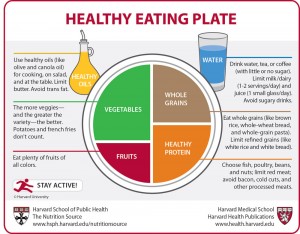Previously in a blog post, I wrote about Biotin Supplements and how they impacted hair growth. I, sadly, realized after the fact that I really put no scientific methods into coming up with any conclusion of how they hurt or help you. So today, the new yet similar topic is that of whether haircuts, biotin, or a good diet help to increase hair growth.



For years and years, the hairstyles that are popular fluctuate like a college student’s weight due to the freshman fifteen. Whether someone wanted hair like DJ Tanner, Jennifer Aniston, or even Kate Middleton  , hair and hair growth have played a huge part in society and how it views people. So as we continue to strive for hair that fits with the crowd, many sit around looking for ways to increase the health and length of their hair. Contrary to popular belief, people all over are wiping out the age old believe that a haircut every so often makes your hair grow. The point of these frequent haircuts are not so much to increase the length of your hair, but the strength and health of it when it does grow.
, hair and hair growth have played a huge part in society and how it views people. So as we continue to strive for hair that fits with the crowd, many sit around looking for ways to increase the health and length of their hair. Contrary to popular belief, people all over are wiping out the age old believe that a haircut every so often makes your hair grow. The point of these frequent haircuts are not so much to increase the length of your hair, but the strength and health of it when it does grow.
One major thing to remember when looking for treatments for hair is that, “rate of hair growth”, according to Elizabeth Cunnane Phillips, who happens to be a trichologist at a hair and scalp clinic in New York, “is predetermined genetically” (Kitchens). So if the rate of hair growth is simply out of our hands due to genetics, do Biotin, haircuts, and a healthy diet really impact hair growth at all?
After about an hour of research, I was unable to find any real experiments that worked to test these individual subjects. I, however, came up with a possible experiment that could work to figure out if these treatments actually work.
In order for us to conclude anything of this study, the test subjects would have to be broken up into three groups, and two groups within those groups. We would partake in random sampling to split people into these three groups, which include; a group of people taking biotin supplements, a group of people trimming their hair the recommended every 8-12 weeks, and people who will have to maintain a healthy diet for the course of the study. Within those groups, however, the individuals will be split into those with thick hair, and those with fine hair. These groups are a necessity due to the fact that different types of hair are able to grow at different rates.
This study will start off by measuring the length of each individual’s hair, and periodically checking the length to see the effects of the practice in which the groups are partaking over a six-month time period. This time period should allow for enough time to get a good idea as to what the impact of each practice has on the hair of the people who are partaking. During this time period, the individuals who are taking biotin will not be allowed to cut their hair, those eating a well balanced diet will not be able to use biotin, and so on. This practice also will be able to show which treatments work best on certain types of hair, but at the same time the results will not always be correct due to this looming “genetically determined” hair growth rate.
The results as a whole would end up varying extremely due to those factors that are seemingly out of our hands, but I believe that with research of this kind, we might be able to accurately determine whether or not these different actions impact hair growth. If I had to take a guess at which might work best to improve hair growth, I would have to say the healthier diet. Most things tend to improve with healthier diets, such as physical health, and mental awareness, but this is another thing that would be able to potentially be figured out as a part of partaking in studies similar to these.
Sources:
Kitchens, Simone. “Hair Growth Tips: Do Regular Trims Really Make It Grow Faster?” The Huffington Post. TheHuffingtonPost.com, 07 May 2012. Web. 06 Oct. 2014.
